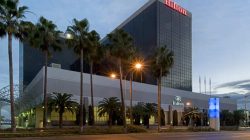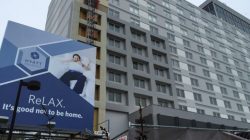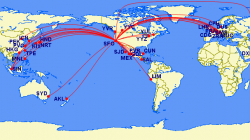Los Angeles World Airports (LAWA) invited me to visit LAX to get a “behind-the-scenes” view of its newest facilities and ongoing projects that are part of a broader $14 billion airport modernization program. LAX Airport is one of the world’s busiest, if not THE busiest, origin-and-destination hubs, and is on-track to construct facilities capable of processing up to 100 million annual passengers per year within the next decade.
The invitation originally came from China Eastern Airlines, who wanted to do a tour of their new 777-300ER, and LAWA stepped in to offer reporters the chance to give them a tour of the airport projects, including cargo areas, the Qantas hangar, the Midfield Satellite Concourse (MSC) construction, and check out the back of the Tom Bradley International Terminal (TBIT).
Editor’s Note: This is the first installment in a three-part series focusing on LAX Airport. This story focuses on a special media tour organized by Los Angeles World Airports and China Eastern Airlines, while Part II will focus on the commercial state of LAX airport pertaining to terminal layouts, airlines serving LAX, and the case for change to elevate the airport experience at LAX. Part III will detail the specifics behind the new LAX airport as the projects come to fruition.
I also had a chance to sit down with several key personnel from LAWA, including John Erickson, Legislative Representative – Office fo External Affairs, Becca Doten – Director of Public Relations at LAWA, and Mario Lafaurie – Chief of Operations, LAX Airport Ops. After the tour, these exceptionally friendly and hospitable Angelenos were eager to talk to me about the LAMP (Landside Access Modernization Program), which is still a few years away, but nevertheless exciting.
This is a three-part story on all of the exciting changes at Los Angeles World Airports (LAWA). Part I will focus on the Media Tour arranged by China Eastern and LAWA. Part Two will focus on LAX today, as the world’s busiest Origin-and-Destination (O&D) airports. Part Three will focus on all of the new projects in the pipeline, including the Midfield Satellite Concourse (MSC), Landside Access Modernization Program (LAMP), and Terminal 1.5.
“LAX On The Move”
The inspiration behind the tour started when China Eastern reached out to LAWA and said they want to do a tour of the 777-300ER, and LAWA thought it would be a great way to also showcase some of its major developments on the airport side. John helped to coordinate all of the logistics, piecing together an itinerary that would give media reporters a glimpse into the cargo areas, the Qantas hangar, construction of the Midfield Satellite Concourse, the back of the Tom Bradley International Terminal (TBIT), and the Korean Air lounge, prior to the China Eastern tour.
We would be transported around by shuttle bus, and we were on the airfield by 5:30. The sun was setting, and there was a beautiful backdrop with heavies coming in from all corners of the earth.
“Everyone always loves to see planes taking on and off, and we had such an elegant time on the bus,” said Erickson.
LAWA is justified in wanting to show-off its goods. Based on growth alone, 2017 was a huge year for LAX. Passenger traffic grew a 4.5% from 80.9 in 2016 to 84.6 million, with an 8.7% surge in international passengers. Aircraft movements rose from 623,000 in 2016 to over 645,000 in 2017.
But that wasn’t all: the largest airline terminal relocation in the history of LAX, and one of the biggest ever as an operating airport took place in May 2017 seemingly without a hitch. Over a five-day period, one-third of LAX’s airline partners moved to either new terminals or new ticket counters, which were an end-result of Delta’s $1.9 billion investments in revamping and connecting Terminals 2 and 3 to become its new home. Delta had previously operated gates in Terminals 5 and 6 on the southern end of the airport, and the move would essentially swap the airlines previously serving Terminals 2 and 3 into Terminals 5 and 6.
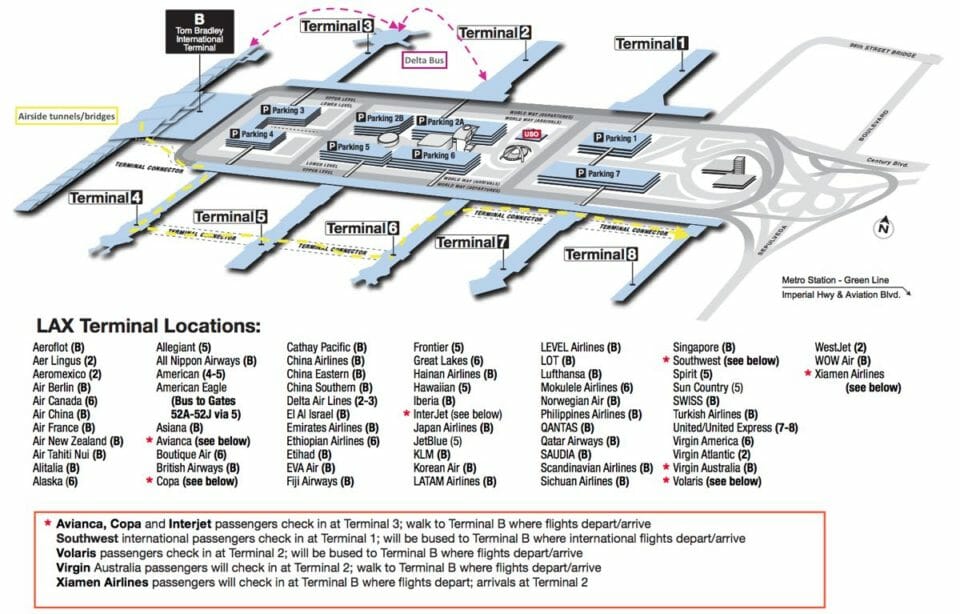
The operation included using 16 moving trucks, 200 movers, and 30 volunteer assistants, moving approximately 1,100 four-wheel dollies, 9,200 boxes, and 900 computers. “LAX on the MOVE” shuttle buses, wrapped in neon green to match the vest of volunteers, ran between Terminals 2/3 and 5/6 to assist guests who were at the incorrect terminals.
The move was intended to help increase gate capacity for Delta customers, as well as provide quicker/easier access to the Delta terminal (since the entrance to LAX is one way, and must follow a horseshoe path). It would also help co-locate Delta closer to its SkyTeam partners in Terminals 2 and 3 (Virgin Atlantic, Virgin Australia, AeroMexico and WestJet), as well as provide airside bus transportation to and from the TBIT, removing the need to re-screen customers who were connecting.
For airlines that moved out of T2/T3 to T5/T6, such as Air Canada, Allegiant, Frontier, Hawaiian, JetBlue, Spirit, Sun Country, and Virgin America, the move would enable them to have easier access to connect to the TBIT via the T4 connector, and enjoy newer facilities within the terminals as well.
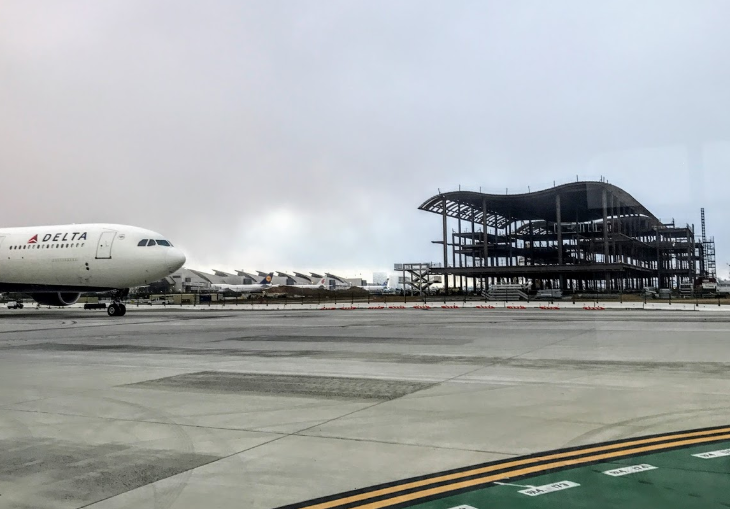
Touring the Qantas Maintenance Hangar
After receiving the history of the Delta move, Earlier in 2017, Qantas unveiled a $30-million maintenance and engineering facility in LAX, measuring at 613,543-square-feet. It is one of the largest commercial hangars in North America and the first that is specifically designed to accommodate the Airbus A380. It is used to carry out maintenance checks on Qantas’ Airbus A380 and 747 aircraft during the ground time at LAX, and will also service the 787-9 when it commences service to LAX in 2018.
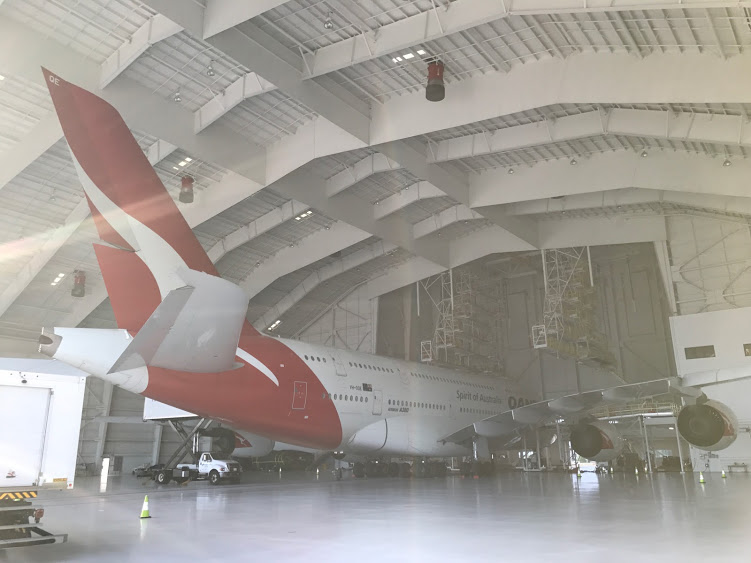
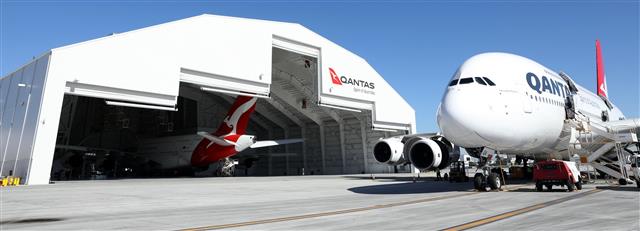
The new hangar has 50% more space than the previous one and has the capacity for four aircraft to be worked on simultaneously. It was built in 1958, back when Qantas flew 707s to Southern California. It was demolished to make space for the MSC. Qantas has a pretty sweet time-lapse of the construction on its YouTube page.
“It’s pretty magnificent that they can actually shut the doors on this hangar,” added John. “The planes come in during the morning, get fixed, and are loaded up and out that night.”
Preview of the Midfield Satellite Concourse (MSC)
The MSC project broke ground over one year ago in February 2017 and is a 750,000 square foot building that will be connected to the existing TBIT facility. The 12-gate MSC represents $1.6 billion of the $14 billion overall 3-P (Public-Private Partnership) project to renovate LAX.
The MSC will be connected to the TBIT – which will then be referred to as “Bradley West” – via two underground tunnels with moving walkways. Arriving passengers will follow the elevated corridors above the moving walkways to proceed to the Federal Inspection Station (FIS) facility at the TBIT. Behind-the-scenes, there is a Baggage Optimization Project (BOP) underway to support the additional baggage-processing capacity that will be introduced by the new gates.
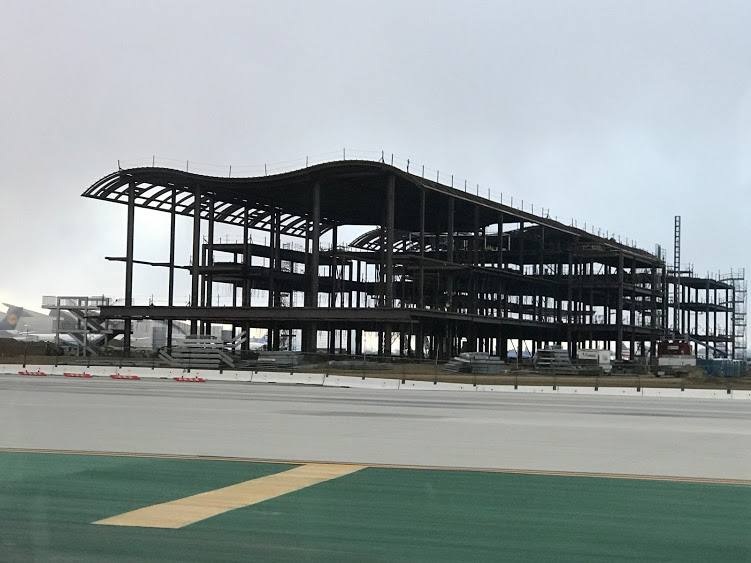

A core element of this project is constructing the North Baggage Handling System (NBHS) to allow for extra bandwidth to sort and place luggage for inbound and outbound departures. The NBHS, moreover, will replace the current sortation system used at the TBIT, and have the ability to process over 6,000 checked bags per hour.
The MSC is being built simply because even the massive TBIT cannot handle the current volume of flights that are departing from LAX. As part of #LAXOnTheMove, several foreign carriers relocated from Terminals 2 and 3 to the TBIT, including Qatar, Avianca, Hainan, and Interjet. Others, like Virgin Australia and Southwest (international flights), have to retain their check-in facilities at Terminal 2, but busses take them to the TBIT. Bottom line: the TBIT needs more gates.
“People don’t want to get bused in from the remote gates that are by Pershing drive,” says Doten. “We want you to have a seamless experience.”
Getting a Tour of “Bradley West,” or the “TBIT”
Next, we de-boarded the busses near the China Eastern gate and noticed a large “hole” in the wall where the connector between the TBIT and MSC would be installed.
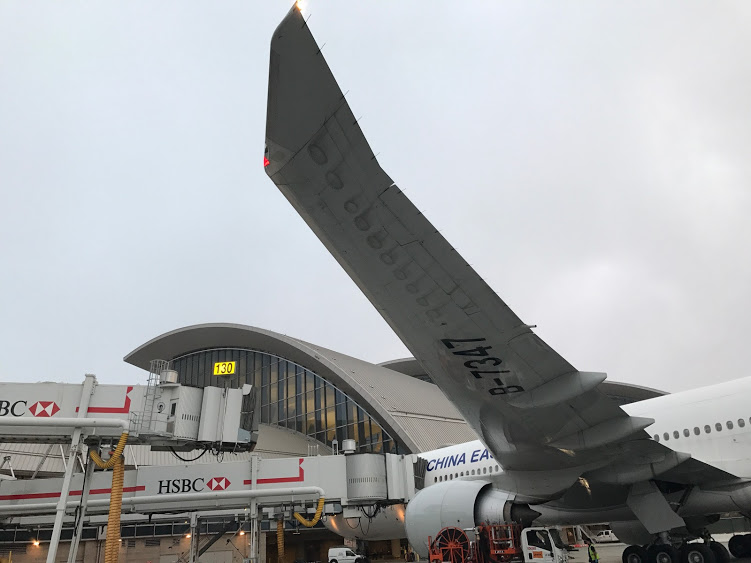
Once inside the terminal, we proceeded to the Korean Air SkyTeam lounge, where we learned a bit more about the actual renovations that took place at the TBIT starting over 10 years ago in 2007. The TBIT was built in time for the 1984 Olympic Games in Los Angeles, with the intention of fast-tracking the athletes, participants, and attendees coming into LAX. Tom Bradley was the 38th mayor of Los Angeles, serving from 1973 to 1993, and was the first African-American mayor of the city.
Bradley West became quickly outdated as LAX grew. Denver-based Fentress Architects won the contract in 2007 to modernize the TBIT (and later, to create the MSC) and help kick-off the LAX modernization program. The TBIT remodel was completed in two phases: one that was ready by 2013, and the other by 2015.
One will notice immediately, at first glance of the exterior design, that the aluminum rooftop has a funky, half-shell geodesic theme that appears to run recurrently along the length of the terminal. This is intentional, as the design firm wanted it to represent the overlapping waves of the Pacific Ocean.
Video: cool time-lapse video of the New TBIT Construction, published in 2013 by LAWA.
In total, Bradley West measures 2,335 feet long and occupies 1.2 million square feet. Its erection required 20,000 tons of steel, 310,758 square feet of glass, and 405,405 cubic feet of concrete. The concourse areas are split into the North and South concourses, with an extension of the North Concourse that includes the Interim West Bus Terminal (these were the gates Doten was referring to in her prior comment). The concourses occupy seven floors, while the “Great Hall” located right as the passengers enter into the “Bradley West Core” occupies seven stories standing at 130 feet. Since the big windows at LAX face away from the sun, it permits plenty of daylight while shielding passengers from glare and heat.
The FIS of the old TBIT building was demolished, and a new FIS corridor was built above level. A new security screening checkpoint was also added with the ability to process up to 5000 passengers per hour.
“We don’t get that far for a lot of different reasons, but we have the ability to do that,” said Mario LaFaurie, Chief of Operations. “It is a good thing for the future of what LAX is going to do. The MSC will help process an additional 2,000 passengers per hour, and is all geared to help and support the main TBIT building.”
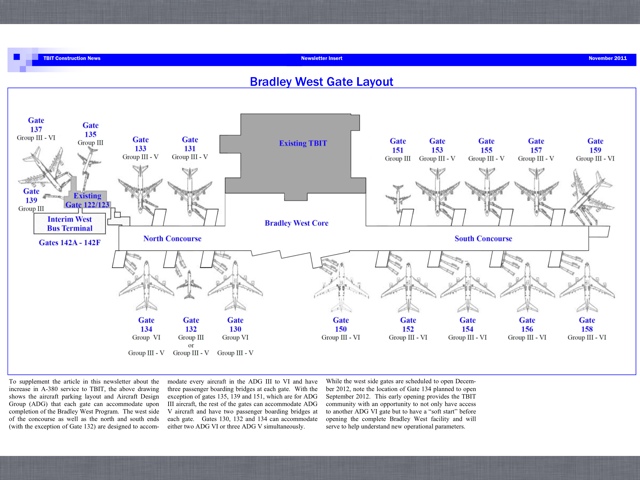
For the VIP travelers, the new TBIT did away with having a dozen plus individual airline lounges and instead has consolidated many of them into groupings by each alliance. There is Star Alliance First and Business Class lounge, a OneWorld Business Class lounge, a Korean Air First and Business Class lounge (for SkyTeam elites), a Qantas First Class lounge, an Emirates lounge, an Etihad lounge, and the Los Angeles lounge (for everyone else).
TBIT offers 18 gates in total, with 9 located on the North Concourse and 9 on the South Concourse, and most of them facing towards the Pacific Ocean can accommodate an Airbus A380. The interim, “west bus terminal” shuttles passengers to nine satellite gates for international flights.
In 2016, LAX completed the construction of the “connector” from Terminal 4 to the TBIT, which allows passengers to seamlessly transit between the American Airlines terminal and TBIT, in both directions, without having to re-clear security. The walk can be completed in four minutes or less. Terminals 5, 6, 7 and 8 are also connected to Terminal 4 through airside connectors, but this involves a lot of walking.
After we poked our heads into the KAL lounge we strolled through the terminal back towards the China Eastern gates. There are some pretty nice features of this facility: you can order food ahead and pick it up at your gate, dine at fancy places like III Forks or Kentucky Fried Chicken, or relax in one of the lounges. There are art programs, live music, celebrity lookalikes, and dozens of restaurants renowned chefs from the LA area.
Touring China Eastern
Around 7 PM, we proceeded to the China Eastern gate to enjoy some premium snacks before touring its 777-300ER First, Business, and Economy Class cabins. For more details on that tour, follow this link to the separate post.
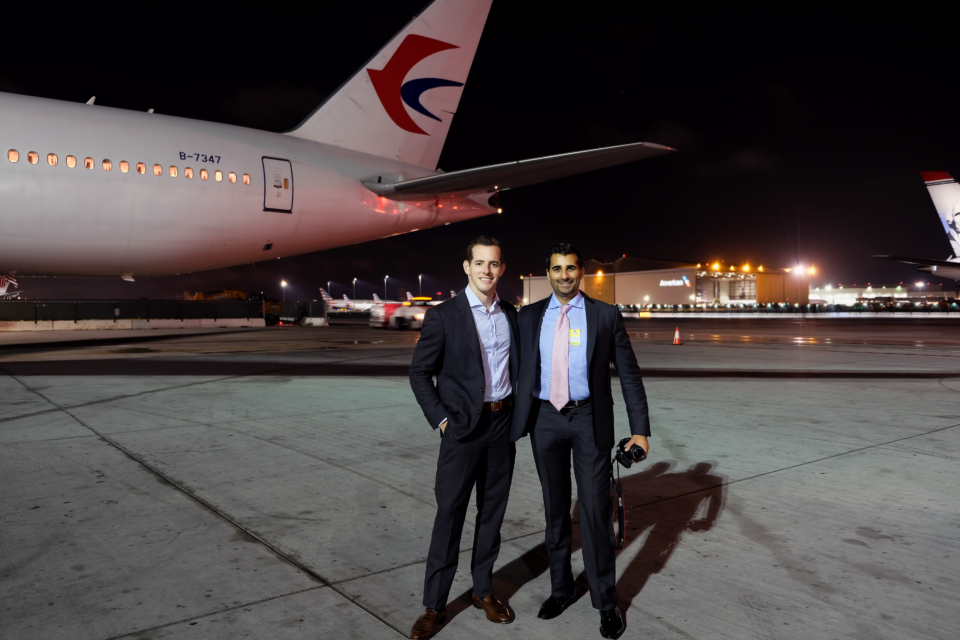
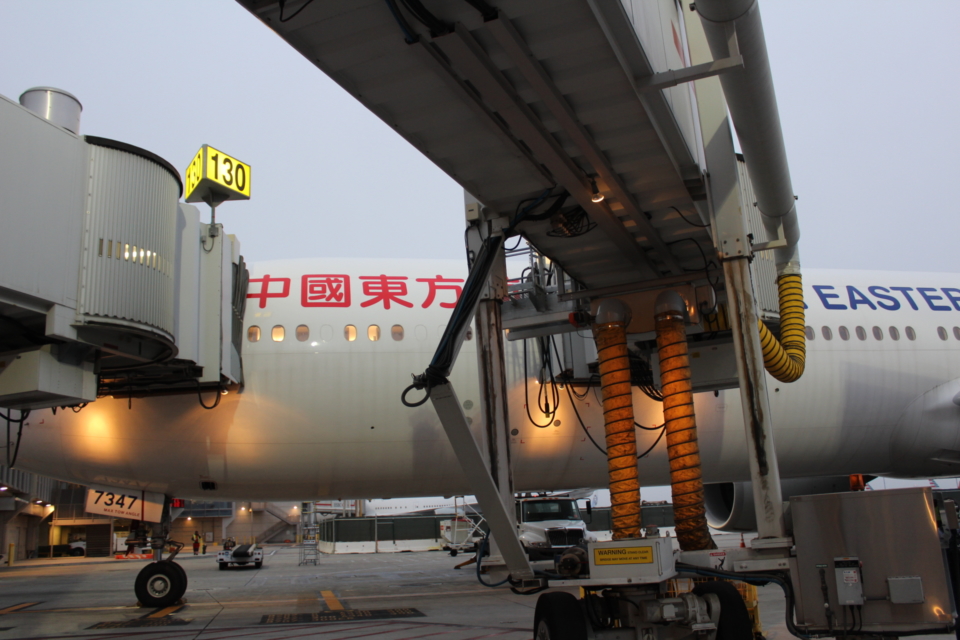
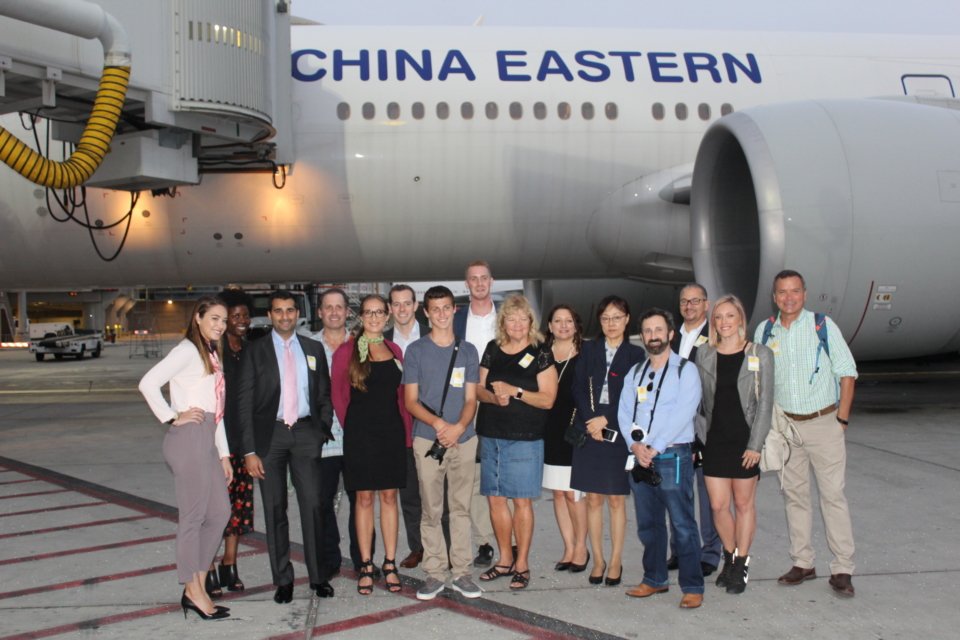
Up Next: LAX Airport Today
The next installment of this series will focus on LAX airport as it exists today in 2018, analyzing traffic, routes, terminals, constraints, opportunities, and future projects. Stay tuned!
Rohan would like to thank China Eastern Airlines, Los Angeles World Airports, and the Moak Group for inviting Travel Codex to partake in this media tour.


